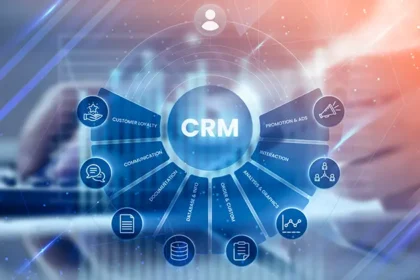According to the World Health Organization, there are over 1 billion people who have a disability. That’s one in every five Americans and one out of six EU citizens. Every disabled person deserves the right to have equal access to everything that a person without a disability takes for granted. This includes access to locations, products, services, and opportunities. Not only that, this is an emerging market that has an annual disposable income of $1.9 trillion. Therefore, if you’re thinking of growing your business, accessibility is a factor that you can’t afford to ignore.
What is accessibility?
What does accessibility mean for your business? Accessibility is defined as the idea that anyone can use a product or service however they encounter it whether or not they have a disability. As a business owner, you need to think of how you can ensure your business provides people with disabilities access to your services and offerings. For instance, if you are planning on growing your business by building a new branch, then you should consider how people with disabilities will be able to get into your store. Consider installing wheelchair ramps and allowing service animals to enter your store. In like manner, if you’re planning on expanding your physical business by entering the digital world with a website, then you need to ensure that everyone has access to buy from you online.
Defining accessibility: Who is it designed for?
As we’ve already mentioned, accessibility focuses on people with disabilities. However, that doesn’t mean that they’re the only ones who benefit from this. Accessibility is good for all. For example, video captions were designed to help people who have difficulties hearing to be able to understand what’s happening in a video. Video captions also benefit people who want to be able to watch videos on mute. Not only does high-contrast text allow people with visual impairments to read content, but it also enables people to read content on their mobile device while out in bright sunlight.
4 principles of accessibility
Aside from making your business physically accessible, you should also take into consideration your digital content. To ensure the accessibility of your content, you need to follow the four principles given by the Web Content Accessibility Guidelines (WCAG). Many companies turn to professional Web Accessibility Services to help meet these guidelines and maintain compliance across all digital platforms. Ensuring accessibility not only supports inclusivity but also helps your business reach a wider audience.
Perceivable
According to the WCAG 2.0, perceivable means that “information and user interface components must be presentable to users in ways they can perceive.” An example of a perceivable website includes a website that provides text alternatives (alt text) for all non-text content. Including alt text on images allows a screen reader user to access and understand the content of your images. Alt text should include a brief description of the content presented in the image.
Another example is a video transcript. Both of these text alternatives allow users with visual impairments to perceive and understand the information presented through videos and images.
Operable
Operable, based on the WCAG, means that user interface components and navigation must be operable to all users. Simply put, you need to make sure that all users can successfully use the buttons, access controls, and interact with the elements on your digital product or website. For example, make sure that all of the functionality on your website is operable for keyboard-only users. This is important because not everyone can use a mouse to navigate a website.
Understandable
Understandable means that information and the operation of the user interface must be understandable. This means that the content on your website or digital product must be easy to read and understand. For example, form elements need to provide input assistance such as labels or instructions when input is needed. Your website or digital product should also have consistent navigation. This allows users to understand and remember how to use your website or digital product.
Robust
WCAG considers content robust when it can be interpreted reliably by a wide range of people, including those using assistive technologies. For example, you need to ensure that your website can run on any browser and that your digital documents such as PDFs are accessible to screen reader users.
4 advantages of making technology accessible
Why should you invest in building accessibility into your digital content? Aside from the legal issue, there are a number of benefits to providing accessible websites.
Building a website accessibly from scratch cuts costs
It’s less expensive to incorporate accessibility in the design of your website or digital product than it is to try to add it on a completed design. Since website accessibility is a legal requirement, having to redesign your website after receiving a legal complaint is a waste of money that you could have spent elsewhere. Moreover, developing accessibility overlaps with adapting your website to mobile devices which helps reduce the amount of time, money, and work spent on creating a separate mobile version of your website.
User experience is enhanced
Accessibility enhances the user experience. As we’ve already mentioned, features that are added to provide access to those with disabilities also benefit other users as well. This improves everyone’s user experience while ensuring that all users are able to experience what you’re offering.
Attracting end users is easier
It’s not only people with disabilities that are in need of accessibility features. Often environmental conditions such as varying light or high noise levels prevent users from consuming content. There are some who have low-bandwidth connections. By ensuring accessibility, you’re enabling these people to have access to your digital product or website as well.
Moreover, when you build an accessible product, you’re gaining long-term customers. Most people tend to leave a website or uninstall an app if they find it difficult to use. By providing an accessible website, more people will opt for your digital product.
Integrating the disability sector supports equality
There’s no doubt that accessibility is good for business, both from a legal and profitable standpoint. However, allowing all users to be able to consume your content and use your goods/services advocates for those who have felt excluded from society. It allows everyone to enjoy full digital experiences, placing everyone on a level playground.
PDF & document remediation
When we talk about content, it’s not just what is directly on your website or on your app/software. If you have documents that you share, you need to make sure that they’re accessible as well. That means that documents can be read using assistive technology such as connected braille displays. It also means that it can be understood by all, even those with cognitive disorders.
Because not all documents were initially created with accessibility in mind, they may need to undergo document remediation. This is when you evaluate and repair your existing documents based on accessibility standards.
Information becomes more usable
The advantage of PDF remediation is not just about ensuring that documents can be read by people with disabilities. It also makes your content more usable by everyone. Accessible documents include things such as document titles and descriptive links.
Audience interests are fulfilled
An accessible PDF allows users to easily understand and navigate content even if they’re using adaptive technology. Making a document accessible includes the addition of headings as well as a table of content. These features allow users to directly go to the content they need instead of reading through 50 pages of text that they’re not interested in. Imagine using a screen-reader and not being able to skip to the good part?
Positive changes in SEO
Not only do tags and alt text for images in your PDFs help users comprehend your content better they also enable you to improve SEO. Google crawls, indexes, and ranks PDFs. Headings will enable them to understand the topics inside your documents. Additionally, alt text is used to rank your website.
Conclusion:
There are numerous benefits to building accessibility into your technology. In addition to advocating for equality, you also increase the market share of your business. You will attract more end-users through your website and provide them with a better user experience. With PDF remediation, you’re also able to provide them with easy-to-read content. As an added bonus, it makes your documents optimal for search engines which leads to even more customers.
Author Bio
David Gevorkian
David started Be Accessible because of his passion for website accessibility and ADA compliance. He spent much of his career working for financial institutions creating websites and mobile applications. He earned his Master’s in Business Administration from Salve Regina University in Rhode Island. David is an advocate for creating web interfaces usable by all people. He enjoys recording music and playing soccer with friends.










